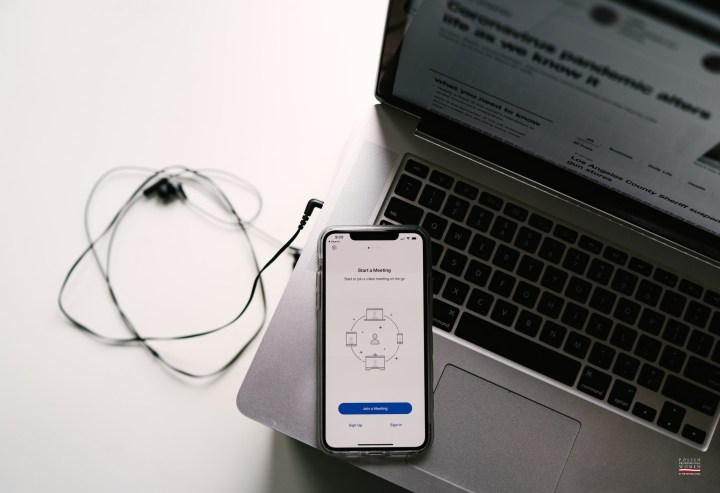
Ah, Zoom. The saviour of our jobs, the holy grail of freelancers, the number one tool during the pandemic. The spike in the company’s value speaks for itself – we wouldn’t have survived the last six months without it.
A few months since March passed, and my working-from-home high is slowly diminishing. I voice my cheerful “thaaaanks…byyyeee…!” to end one video conference, while rubbing my eyes in preparation to join yet another one. It’s the end of the workday, so this time is a webinar on productivity. Yes, it’s not even for work, but for my own, personal development. It’s also dinner time, so I put myself on mute, turn my camera off, and start pulling out pots and pans while the panelists recite their impressive bios.
My partner emerges from his home office and tries to mouth something in sign language – because that’s how we communicate in the era of never-ending online calls when you can never be sure if you’re on mute. At the second try, I finally manage to decipher what he’s saying: “14 meetings!” He was on fourteen online calls in one day. This can’t be normal.
Back in April I had a Zoom birthday party. I have to say, it was nice back then. A surprise call with my friends and family (many of whom never met in real life). We chatted for a bit, each of us raising our own solitary champagne glass to the camera, until we ran out of things to say. After everyone dropped off one by one, there was nothing left to do but drink alone.
Zooming out
The first time I started questioning my relationship with video calls was when my manager’s camera broke down. Suddenly, it was ok not to turn my camera on as well. In truth, it was probably always fine to do so, but at the start of the pandemic I felt like video would be this magical thread that re-connects all of us sitting in separate living rooms.
But instead, it quickly became unsettling to see the video image of yourself all day, every day. I think there’s a reason human beings were designed in a way that we can never see our own faces while we talk. Evolution has not prepared us for the level of self-scrutiny that Zoom has forced us into. I never knew my teeth were showing so much while I talk. Is this how I look in the mornings? I also happened to have an emotional conversation on Zoom, and let me tell you that seeing yourself crying on video…not a great experience
So I stopped turning my camera on by default. I do when I have an informal chat with a close colleague, or a catch up with a friend.
Walk in nature
Another thing that helps me a lot is simply going for a walk in the morning and at the end of the workday. This ritual helps me draw a boundary between my work and my life. And, simply resting your eyes by looking at the horizon and the trees helps soothe the strained eye muscles and relax the forehead. The simplest remedies are the best, and a walk in nature is the ultimate cure-for-all.
And while I walk, I also started using the almost-forgotten, old-fashioned function of my smartphone: calling people. I uninstalled Zoom from my phone, and if I need to talk to my friends or family, I simply call them with my headphones on.
Walking and talking is incredibly soothing, and before you know it, you end up getting an hour of exercise, and making your grandma happy.
Wear blue light glasses

Speaking of strained eyesight, I also started using blue light glasses. I realized that between work during the day, and Netflix at night, I pretty much spend all my days in front of a screen (and I’m not even mentioning looking at my phone). Such exposure to blue light can really mess up your sleep patterns and tire your eyes, and simple glasses that block this light definitely help.
